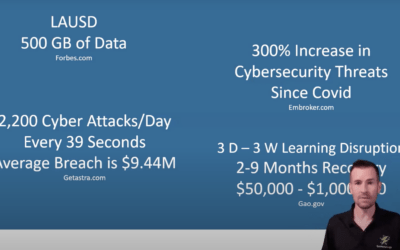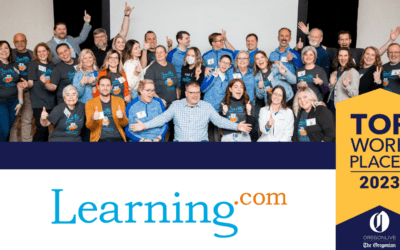Computational thinking has become important to teaching problem solving in education because it empowers students with processes to develop strategic solutions to complex problems, essentially “leveling up” their skills, or creating algorithms that can make future processes more effective. This enables students to take on more complex challenges and prepare for real-world applications.
Decomposition in Computational Thinking
While the process of computational thinking is multifaceted, there is one key to computational thinking that is essential for success: decomposition. Decomposition is the process of breaking a complex task or problem into smaller, more manageable pieces. From this decomposition, students can eliminate unnecessary information, identify patterns and begin the process of identifying which parts of the problem are most important, how to solve or complete each step, and how those parts can be put together for a clear and unified step-by-step solution.
Why is the Decomposition Technique Required in Computational Thinking?
The technique of decomposition is required in computational thinking because it breaks complex tasks into subtasks while developing a sequentially-based understanding of the problem. This allows unnecessary information to be discarded, patterns to be identified, relevant information to be extracted and the process of step-by-step resolution to be defined for a more effective problem-solving process.
By definition, computational thinking is the process of tackling complex problems and finding a clear, step-by-step solution that can be replicated. Decomposition, therefore, is essential to this process as it includes breaking a task into several sub-tasks, helping to align the task to a step-by-step solution.
Another reason decomposition in computational thinking is important is because it allows each subtask to be examined more closely. This not only helps to categorize information as essential or non-essential, but also empowers the problem-solver with a better ability to analyze each specific part of the task or challenge to more effectively develop a reasonable solution.
Examples of Decomposition in Computational Thinking
Below are some real-world examples of utilizing decomposition in computational thinking:
- You have to clean your house. Instead of facing the task as a whole, you practice decomposition by breaking the task into a to-do list with multiple subtasks.
- To build shelves for a storage space, you practice decomposition by measuring the space, creating a blueprint or plan to determine the size of the shelves and the materials you need to accomplish the task. Next, you purchase the supplies and cut the lumber to size, then install one wall of shelves at a time.
- In science, to prove or disprove a hypothesis, you practice decomposition by creating subtasks including background research, observation, generating a hypothesis, determining which variables to test, performing experiments and drawing a conclusion.
Final Thoughts
Consider how often computational thinking appears in your everyday life. Do you naturally use decomposition and computational thinking to resolve a challenge? For more information about computational thinking and how they apply to students, explore some of our most recent articles:
Planning Digital Literacy Curriculum with ISTE, CSTA & Core Standards
Standards in education provide a crucial framework for defining what students should learn and achieve at various educational levels. These standards play an important role in shaping curriculum, as well as assessment and measurement. Standards provide clear...
What is Career Readiness in Education & How Does It Apply to Digital Literacy?
In education, “career readiness” refers to curriculum and learning that prepares students for life beyond the classroom and into the job market. “College readiness” and “career readiness” have long been the overarching goal of Common Core Standards, but with an...
Three Digital Literacy Skills Essential for Jobs of the Future
According to Dell Technologies’ report, Realizing 2030: A Divided Vision of the Future, it is estimated that 85 percent of forecasted jobs for 2030 do not exist yet, largely because technology is expanding so rapidly. As a result of this rapid technology expansion,...
9 Things You Need to Know about School Cybersecurity
Cybersecurity threats have tripled since the COVID-19 pandemic began, and K-12 schools have become a significant target. While Los Angeles Unified School District is one of the most prominent examples, at least 2 million students across the country have been affected...
Why Digital Literacy Skills are Important for Students
While reading and mathematics have remained steadily at the core of education, digital literacy curriculum is a relative newcomer that has quickly become a necessity in today's educational systems. A critical life skill, digital literacy is important not only for...
Real-World Examples of Computational Thinking
In today’s digital and data-driven world, computational thinking is increasingly emerging as a critical skill for industries from technology to manufacturing and beyond. Computational thinking is a problem-solving approach that enables individuals to tackle complex...
Learning.com (Again!) Named a Top Workplace
Learning.com has once again been named among the Top Workplaces in Oregon and Southwestern Washington! We’ve now been recognized 7 of the last 8 years for our friendly, welcoming culture. While being named a Top Workplace again and again and again might start to seem,...
Supporting Digital Literacy Skills Outside Computer Class
In our rapidly evolving digital landscaping, digital skills are no longer optional, but a necessity for students of all ages. The definition of digital literacy has evolved as technology continues to change, encompassing not only the use of digital devices and...
How to Support Keyboarding at Home
With the new school year starting, many parents wonder how to best support their children in their education. One important subject parents can support children in is keyboarding (check out our article on the importance of keyboarding for students). However, since...
How to Talk to Kids About Being Safe Online
As the seasons transition and back to school takes off, my focus shifts to my child's safety, both physically and online, and how she is navigating this ever-changing digital landscape. Just as we previously collaborated on a safety plan for physical situations, I...
Back to School: Why More Schools Are Adding Computer Science this Year
Fall is one of my favorite times of the year. We begin to experience crisp, cool air in the mornings and evenings, and football is just around the corner! Also at this time of year, millions of students and teachers are returning to school across the country. In some...
How to Map the Scope & Sequence for Your Digital Literacy Curriculum
This article is an excerpt from our eBook, Building a Digital Literacy Program that Nurtures Future-Ready Students. To build a digital literacy program that is both equitable and effective, developing a comprehensive scope and sequence for the curriculum is...

Learning.com Team
Staff Writers
Founded in 1999, Learning.com provides educators with solutions to prepare their students with critical digital skills. Our web-based curriculum for grades K-12 engages students as they learn keyboarding, online safety, applied productivity tools, computational thinking, coding and more.













